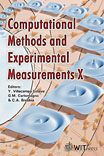Damage Resulting From A High-speed Projectile Impacting A Liquid-filled Metal Tank
Price
Free (open access)
Transaction
Volume
30
Pages
14
Published
2001
Size
2,304 kb
Paper DOI
10.2495/CMEM010871
Copyright
WIT Press
Author(s)
J.P. Borg, J.R. Cogar, S. Tredway, J. Yagla, M. Zwiener
Abstract
Damage resulting from a high-speed projectile impacting a liquid-filled metal tank J.P. Borg', J.R. Cogar*, S. Tredway', J. Yagla^, and M. Zwiener^ Naval Surface Warfare Center, G24, Dahlgren, Virginia, USA. *y —___ Naval Surface Warfare Center, G72, Dahlgren, Virginia, USA. * University of Alabama in Huntsville, Huntsville, Alabama, USA. Abstract A comprehensive experimental and computational investigation was undertaken to better understand and predict the mechanisms of damage and failure of metal tanks filled with liquid after being impacted by a single high-speed projectile. Impact tests were conducted for a variety of target/projectile orientations and aim points. The speed of the projectile varied from subsonic, relative to the sound speed of the liquid fill, to supersonic. The target tanks, composed of steel or aluminum, were filled with a variety of fluids ranging from Newtonian fluids to thickened paste. The projectiles were aluminum
Keywords





